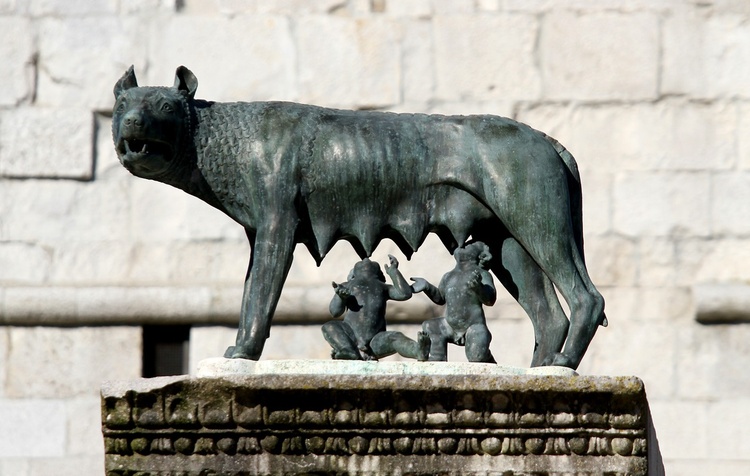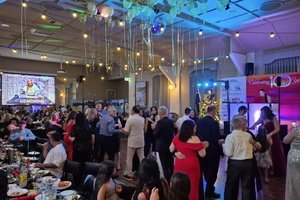Known as the Natale di Roma, the annual tradition is inspired by the story of twins Romulus and Remus, who were the sons of Rhea Silvia and either Mars, the god of war, or the demigod hero Hercules.
The brothers are also believed to be descendents of Aeneas, the Trojan hero and protagonist in Virgil’s Aeneid.
According to legend, the twins were rejected at birth as an ancient prophecy stated that they would overthrow their great-uncle, King Amulius.
As with many mythological figures and demigods, the twins were bigger and more beautiful than average mortal babies.
They were ordered to be killed by the king, but instead were abandoned at birth and set afloat on the Tiber River in a basket by sympathetic servants who disobeyed the orders.
A she-wolf found the boys and nurtured them in a cave now known as the Lupercal (located at the foot of the south side of the Palatine Hill) until a shepherd named Faustulus and his wife Acca Larentia adopted and raised them as their sons.
Once adults, they decided to found a city.
However, they argued over which of the seven hills it would be founded on and in a fit of rage Romulus killed his own brother Remus and became Rome’s first king.
Every year for almost three decades – except during the COVID-19 pandemic – Romans have come together to celebrate the founding of their famous city.
The festivities are organised by a historical dramatic society called the Gruppo Storico Romano, which brings history to life by re-enacting battles, events and displays of ancient theatre and dance in Rome.
For the last two years, the group’s vivid celebration of Natale di Roma has been held online, due to the pandemic; however, the 2022 edition will see the public return to witness the historical re-enactments in person.
The four-day festivities take place at the Circus Maximus, which was once used by the Romans as a place for the chariot race games.
They begin at midday on Thursday, with events that afternoon including a re-enactment of an ancient trench-digging ritual, known as the tracciato del solco that was also called the Pomoerium in the Latin language.
This custom recalls the founding of ancient Roman towns when a trench or mundus was dug and offerings thrown into it to encourage the gods to watch over the inhabitants.
There is also the chance to witness the agricultural Palilia ceremony, held in honour of the goddess Pales, protector of flocks and herds.
This tradition involved Vestal Virgins distributing straw and the ashes and blood of sacrificed animals before jumping over a bonfire three times.
Friday is devoted to workshops focusing on ancient Roman life, examining various aspects including school, clothes, medicine and religion.
Gladiators will be on hand to display their weapons and combat techniques, and the day will end with a concert of ancient Roman music.
Saturday morning will see more workshops while in the afternoon the Circus Maximus will host a match of Harpastum, an ancient ball game imported to Rome from Greece, described by organisers as the “ancestor of rugby”.
This is followed by the crowning of the Dea Roma, or Goddess of Rome, and then the ever-popular gladiator show in the late afternoon.
The highlight of the Natale di Roma celebrations, the grand parade, takes place on Sunday morning.
This impressive procession features around 1500 gladiators, senators, vestal virgins and priestesses, and begins and ends at the Circus Maximus.
The festivities will culminate in an extravaganza of dance, ceremonies and fights, concluding with a re-enactment of the Battle of Bedriacum.
Another spectacular event that occurs in Rome’s birthday is the Dies Natalis phenomenon at the Pantheon.
Each year on this date the midday sun enters the oculus of Rome’s Pantheon and creates a disk of light that centres perfectly on the entrance doorway.
At that exact time, the emperor would enter the temple, his body bathed in the intense golden sunlight.
In 2020, Italy’s culture ministry released a video of the phenomenon which it described as “one of history’s first great special effects”.
To mark the occasion, the city will also open its museums for free on Thursday.
In addition to municipal museums and their exhibitions, there will be free access to the archaeological area of the Circus Maximus and the Mausoleum of Augustus.
Thursday also sees the reopening of the city’s Planetarium.












